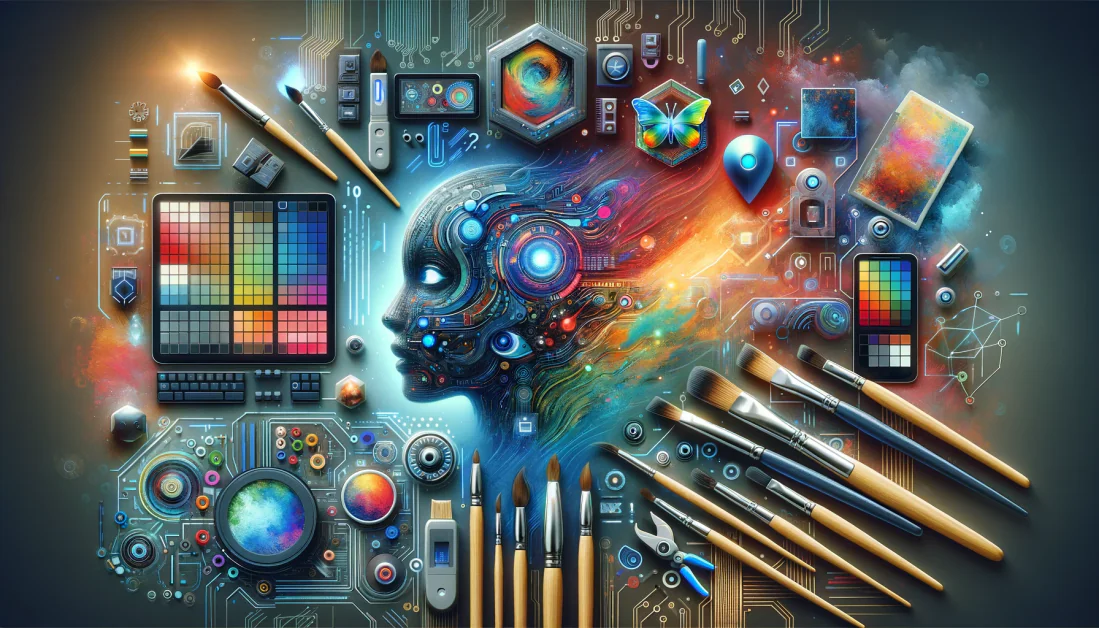The landscape of UI/UX design is constantly evolving, with new trends and technologies transforming how users interact with digital products. In 2024, we’re witnessing a surge in AI-driven design, personalized user experiences, and visually dynamic interfaces. As users demand more seamless, engaging, and intelligent interfaces, designers must adapt to these trends to stay relevant. Let’s explore the top UI/UX trends that will dominate the industry in 2024.
AI-Integrated Design: A Revolution in Creativity
Artificial intelligence is no longer just a buzzword—it’s now an essential tool in the designer’s toolkit. From generating UI prototypes to automating repetitive tasks, AI helps designers focus on solving complex problems. Tools like UXPin and Framer integrate AI to enhance the design process, offering capabilities such as creating fully-coded UI components based on simple prompts. This shift allows designers to allocate more time to creative brainstorming and innovation rather than routine tasks.
Some trending AI based design tools:
DESIGN.AI , Canva Magic Design

Cross-Platform UX: A Personalized Experience Across Devices
While cross-platform UX is not new, its scope is expanding. In 2024, apps are refining user experiences for both large screens and mobile devices. The next big leap is the personalization of these experiences. Platforms are increasingly tailoring content to user preferences, enhancing relevance and engagement. This trend is pushing companies to rethink how they create and deliver content across various devices to ensure consistency and satisfaction.
Location-Based UX: Hyper-Personalization in Action

Location-based user experiences are gaining traction as users increasingly value convenience and personalization. Apps that use location data to provide timely, relevant suggestions—like public transport recommendations—are setting the bar for user-centric design. AI plays a key role here, using data to predict user preferences and suggest services before users even realize they need them. This proactive approach adds value to daily user interactions.
Animated Icons: Breathing Life into Interfaces
With the release of iOS 17, animated icons have emerged as a major trend, bringing a new level of dynamism to app interfaces. Whether you prefer minimalist solid icons or detailed outline icons, animation adds a layer of interactivity and modernity. This trend allows designers to create more engaging user interfaces that mirror the fluidity and responsiveness of today’s digital environments.
3D Visual Elements: Adding Depth to UX Design

3D design elements are becoming essential, especially for applications that require complex data visualization or virtual reality (VR) environments. These elements draw the user’s attention, adding depth and realism to interfaces. From enhancing brand recognition to creating immersive experiences, 3D visuals are proving to be a game-changer in UI/UX design.
Emotionally Intelligent Design: Understanding User Emotions
Designing with emotional intelligence means anticipating and responding to the emotional states of users. Whether it’s through empathetic error messages or personalized interfaces, this trend acknowledges that design is more than just functionality—it’s about creating meaningful experiences. Emotionally intelligent design leverages empathy, feedback, and adaptability to craft interactions that resonate on a deeper level with users.
Bold Typography: The Power of Big, Bold, and Capitalized

Typography is taking center stage in 2024 with big, bold, and capitalized fonts dominating UI designs. These strong visual statements capture attention and emphasize key messages, making them a favorite among designers aiming to create striking, minimalist interfaces. Expect to see bold typography continue to shape how users perceive and interact with digital content.
Conclusion
As 2024 unfolds, the trends in UI/UX design are setting a new standard for digital interactions. AI-powered tools, cross-platform personalization, and emotionally intelligent interfaces are making the design process more efficient and the user experience more engaging. By embracing these trends, designers can stay ahead of the curve and deliver cutting-edge experiences that resonate with users. Prepare to see these innovations reshape the way we interact with digital products in the years to come.
